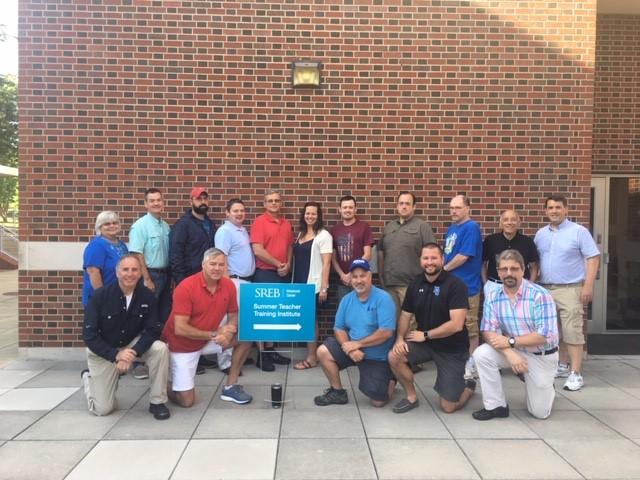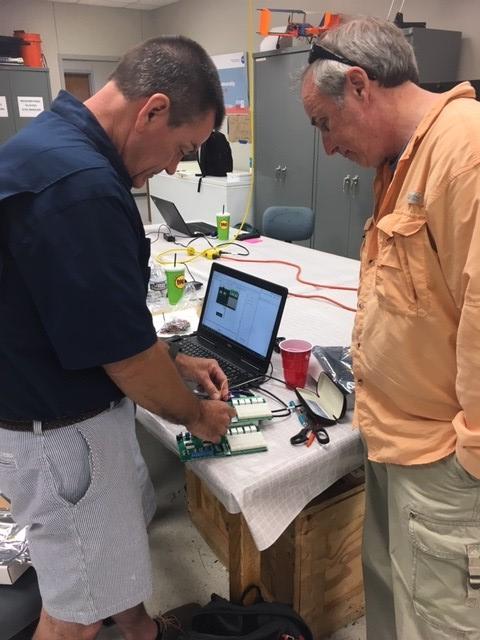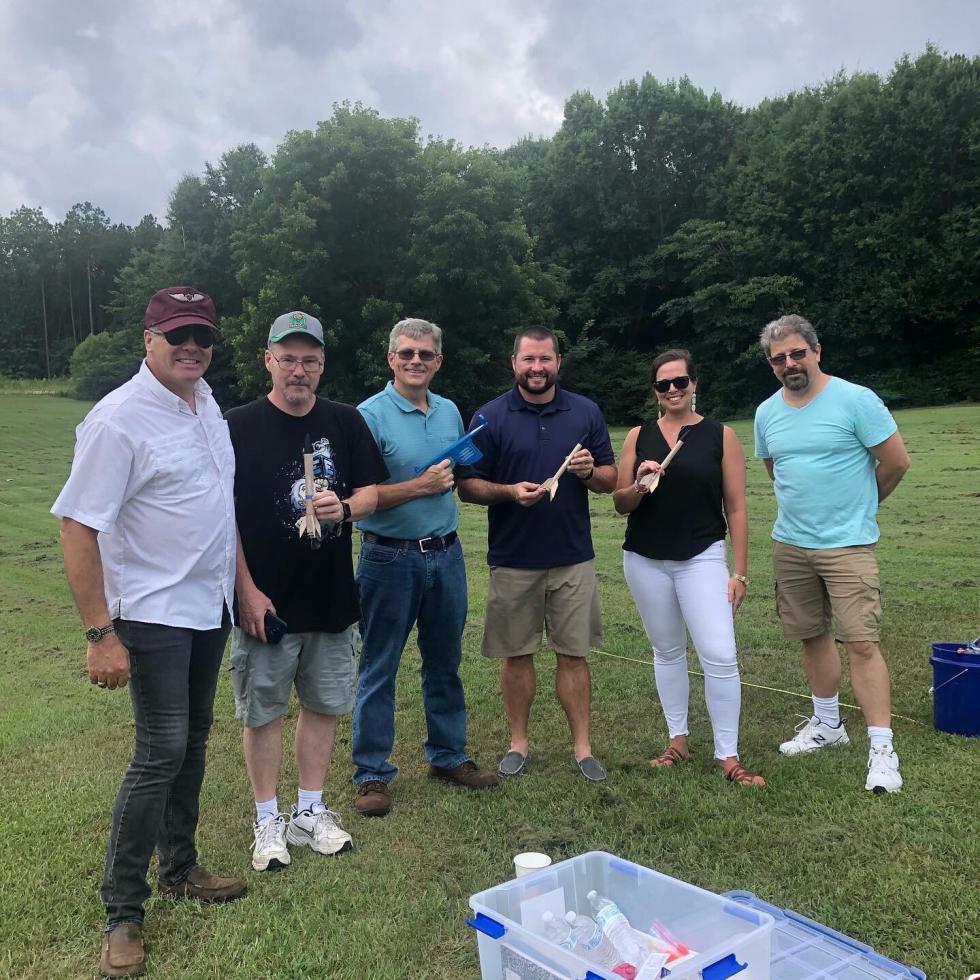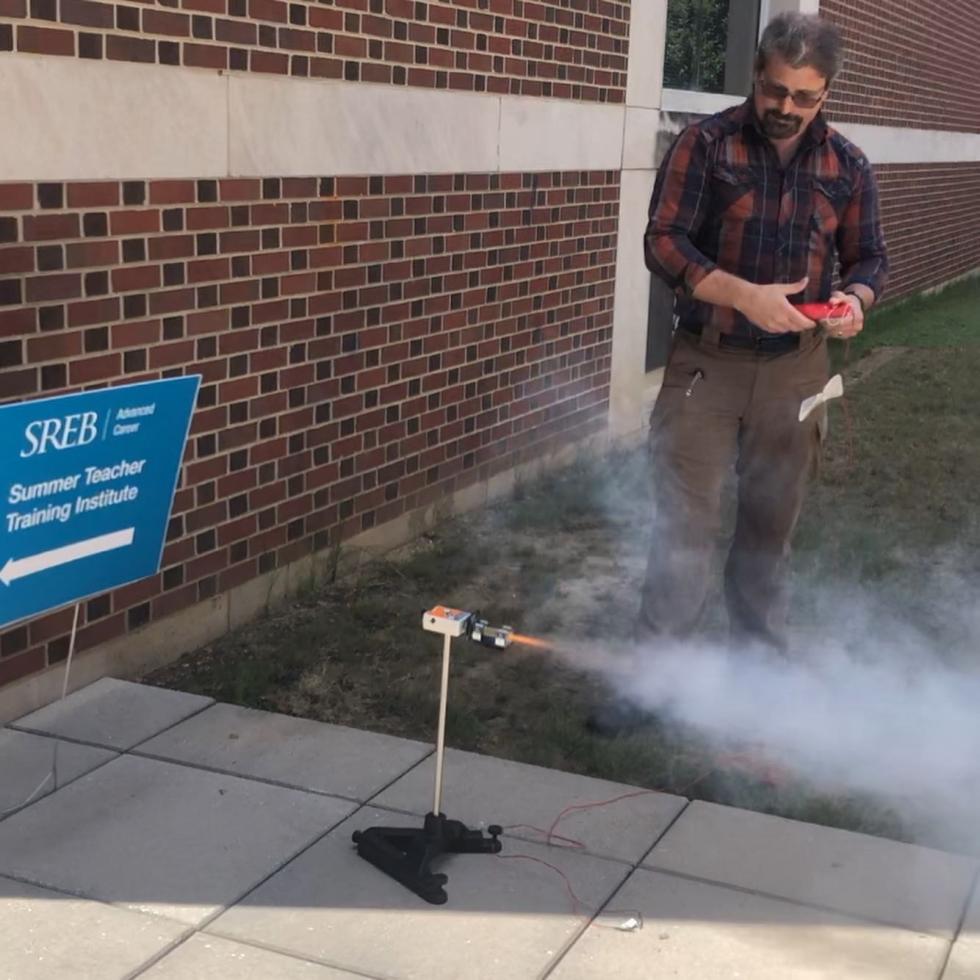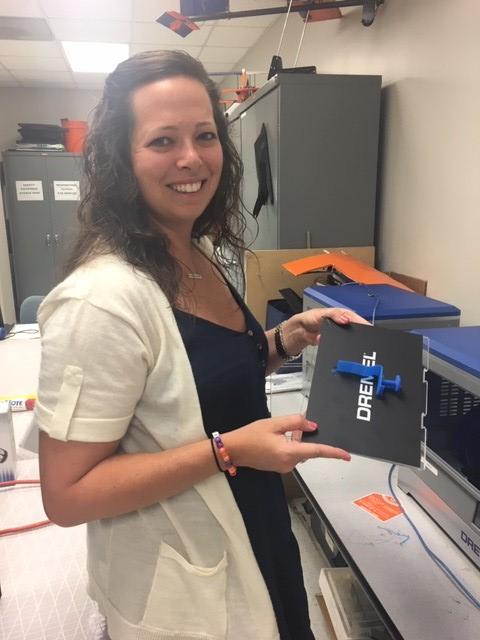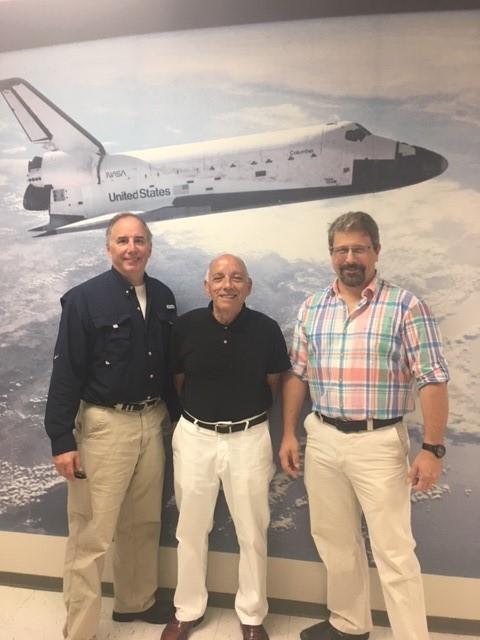Teachers Take a Deep Dive Into Aerospace Engineering
SREB’s July 15-26 STTI at Auburn University
Teachers from Alabama, Georgia, South Carolina and West Virginia came together July 15-26, 2019, at Auburn University to explore the four courses in SREB’s Advanced Career Aerospace Engineering curriculum. Two AC “Lead Learners” — teachers Bill Vivian of Sun Valley High School in North Carolina and Alan Perry of Frankfort High School in Kentucky — led this AC Summer Teacher Training Institute.
Each hands-on, two-week STTI is designed to prepare teachers to teach AC courses using SREB’s approach to project-based learning. Teachers learn course content by using the engineering design process and industry-standard tools and technologies to complete the same real-world projects as their students.
The six teachers who explored the first course in the pathway, Fundamentals of Aerospace Technology, designed and tested a frame for a pilot’s seat, predicted the trajectory of a ballistic projectile, determined how a payload affects a rocket’s flight and designed a hand-launched glider to achieve maximum air time, among other projects.
Teacher James Davis of Anderson I & II Career and Technology Center in South Carolina said: “I was an Aerospace Design Engineer for three years and have taught an introductory aerospace course for seven years. I still found Fundamentals of Aerospace Technology to be an exciting course — and I learned new, inventive methods for teaching aerospace concepts.”
Four teachers completed projects in AC’s Advanced Aerospace Technology course, including designing an aircraft wing with good flight characteristics and determining how the design of an electric aircraft affects the selection and configuration of its propulsion system.
The two teachers who were preparing to teach the third course in the pathway, Aeronautics Engineering Applications, analyzed how the migration to all-digital navigation systems can help aircraft operators reduce costs and built an accurate simulation of a quadcopter.
One teacher tackled the most advanced course in the pathway, Astronautics Engineering Applications. This course asks students to complete such projects as designing a life support system to support astronauts on a science mission on Mars and considering how lunar habitat designers might make the best use of the moon’s geology to create permanent structures for human colonization.
Participating teachers will begin offering the AC course for which they were trained in the fall of 2019.
“I realize now what quality project-based learning looks like. It’s the Advanced Career Course design… students who participate in this curriculum will be well prepared for any future they choose.”
- David Adkins, Lincoln County High School, West Virginia


